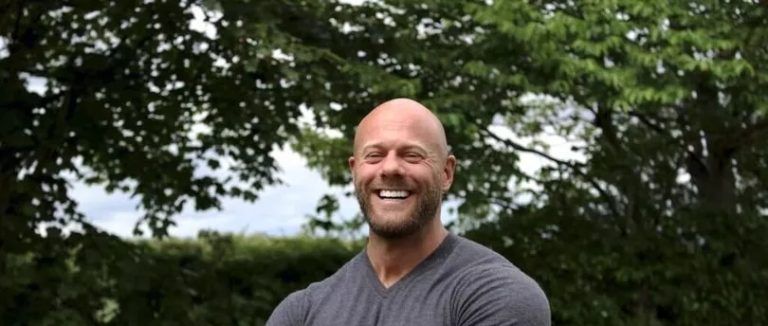A New Era for Project Delivery For decades, AECOM, a Fortune 500 company, has led global infrastructure innovation, delivering complex projects in transportation, energy, water, and sustainability. As a trusted leader worldwide, AECOM tackles some of the world’s toughest challenges—on time, on budget, and with a growing focus on sustainability. Yet, like the entire infrastructure industry, AECOM has long faced a persistent challenge: decisions are only as good as the data available, and in project management, that data often arrives too late. Reports take weeks to compile and analyse, meaning project teams operate in a constant state of lag. By the time a project director gets an update, conditions on-site have likely already changed. “We used to operate on monthly cycles, with lock weeks where data couldn’t move, and reports were already outdated by the time they were read.” —Richard Newey, Head of Risk & Integrated Controls, AECOM In an industry where delays cost millions and sustainability targets grow more ambitious, relying on outdated information is no longer an option. To solve this, AECOM partnered with Nodes & Links to revolutionise project insights, delivering real-time intelligence to clients. While AECOM sought a partner to solve this challenge, Nodes & Links sought an industry leader to help drive real AI-powered change in project controls. AECOM was that partner. “The future doesn’t just happen—you have to forcefully create it. AI in project management is only inevitable if we make it happen. We needed a partner delivering daily, guiding us on what’s needed to make AI genuinely useful to everyone.” —Greg Lawton, CEO, Nodes & Links With AECOM’s deep industry expertise and commitment to innovation, this partnership ensures Nodes & Links’ AI delivers real-world, actionable impact, helping teams make better, faster decisions when it matters most. Why Are Traditional Project Controls Not Enough? The problem wasn’t just the data lag… It was the ripple effects that followed: “With Nodes & Links, we are no longer making decisions on information that is four weeks or six weeks old.” —Richard Newey, AECOM Delays don’t just mean lost time; they waste opportunities. The ability to identify risks before they escalate and adjust strategy in real time separates high-performing projects from those struggling to keep up. The Solution: AI-Powered Project Controls in Real Time AECOM turned to Nodes & Links to eliminate the delays in turning raw project data into actionable information. Instead of waiting weeks for reports, teams now have near-live project visibility, allowing faster, smarter decision-making. “We’re now able to do things at a fraction of the speed we were five years ago—whether it’s analysing critical paths, sub-critical paths, or driving decision-making.” —Richard Newey, AECOM With AI handling the heavy lifting, AECOM’s project teams can now: “AI and automation are transforming how we deliver projects. This technology isn’t just about efficiency, it’s about redefining how we approach decision-making.” —Richard Newey, AECOM But the biggest breakthrough came in an area where project teams have long struggled to integrate real-time insights: sustainability. Beyond Cost & Time: Bringing Carbon into the Equation For decades, project teams have made decisions based on two primary constraints: cost and time. But what about carbon? Traditionally, sustainability has been measured and reported on after the fact, making it nearly impossible to adjust course in real time. Now, Nodes & Links enables AECOM to track carbon impact live, alongside cost and schedule trade-offs, without extra effort from teams. “For the first time in our industry, we’re not just talking about sustainability, we’re actively using data and AI to drive decision-making around carbon reduction.” —Richard Newey, Head of Risk & Integrated Controls, AECOM Nodes & Links’ AI seamlessly integrates carbon insights into existing project schedules, providing an instant view of a project’s carbon profile without requiring additional steps or inputs. With carbon now embedded into project controls, teams can ask new, critical questions: Carbon is no longer separate—it’s at the heart of project strategy. “AECOM is transforming how clients manage carbon. Real-time AI-driven insights help them make sustainable decisions at the right time, not months too late. Partnering with Nodes & Links has made sustainability an actionable priority, not just a goal.” –Nina Palmieri, Project Director, AECOM A Partnership Establishing A New Standard for Project Controls The partnership between AECOM and Nodes & Links isn’t just about adopting AI, it’s about setting a new standard for how major infrastructure projects are managed. “We can’t predict exactly what will happen on every project, but what we can do is ensure project teams have the right data at the right time to make the best possible decisions. AI allows us to do that at a scale and speed we’ve never seen before.” – Richard Newey, Head of Risk & Integrated Controls, AECOM The future of project controls is here. And with AI at the core, it’s smarter, faster, and more sustainable than ever before. Watch the announcement video here: Building, Design & Construction Magazine | The Choice of Industry Professionals














